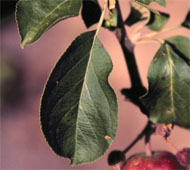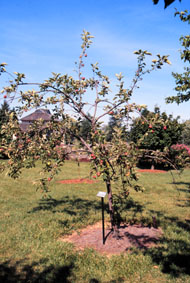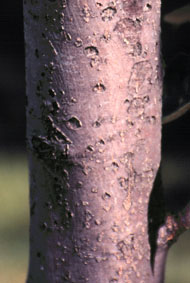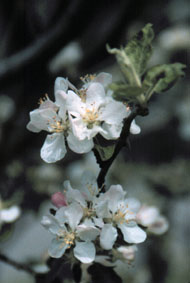Common Apple

Leaf Characteristics
- broad, flat
- simple
- not lobed
- fine, double teeth
- all teeth same size
- shorter stem
- side veins near base longer than others
- symmetrical base
- rounded base
- hairy beneath, margins have fine, sharp teeth

Fruit Characteristics
- other fruit (not cone, winged, acorn, or in pod or capsule)
- without husk or capsules
- loose, not packed tightly together
- fruit with seeds
- small seeds, 1/4" or less in length
- fruit round, 1" or more in diameter
- without grit cells
The Common Apple tree originated in the Old World, probably in western Asia. After having been carried westward into Europe during ancient times it was brought to North America before 1800. Since then, orchard workers have planted this tree in southern Canada and the United States. Today, it grows wild in the eastern U.S., the Pacific states, and in southern Canada. This is the apple tree that Jonathan Chapman, better known as Johnny Appleseed, carried as seeds to people from Pennsylvania through Ohio to Illinois during the late 1700s and early 1800s. The bark of the Common Apple is gray, broken and scaly. The tree grows well in moist soils, and in its area it can be found growing wild in rural and sub-rural areas where people have lived. Fruit tree growers have developed many varieties and hybrids of the Common Apple tree. People use the edible and popular fruit of this tree in many ways. Many kinds of wildlife feed on the fruit. Deer sometimes browse the trees during the winter and Ruffed Grouse often eat the buds.
 Tree Size
height 20' - 30'
diameter 0.5' - 1.5'
Tree Size
height 20' - 30'
diameter 0.5' - 1.5'
 Bark
Bark
 Flower
Flower 